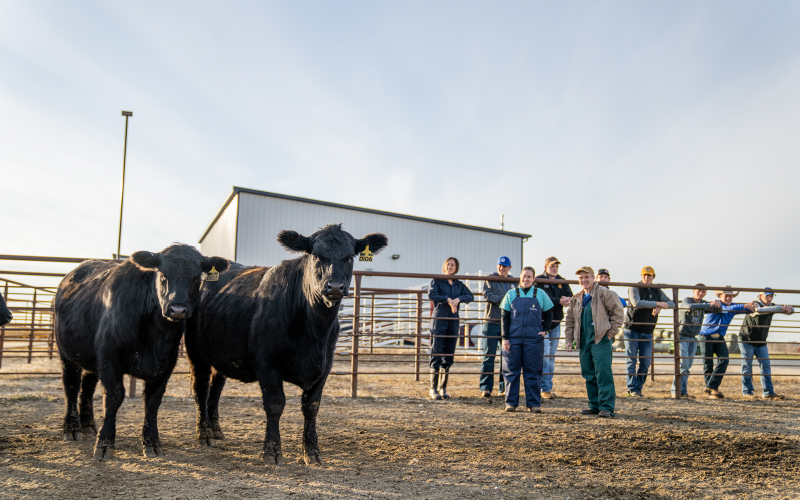Written by Taylor Grussing, former SDSU Extension Cow-Calf Field Specialist. Revised by Robin Salverson.
South Dakota has been experiencing mild winter temperatures. However, a cold weather snap is upon us. Even cattlemen who have experience calving in these conditions may benefit from a review of recommendations as the calving season continues.
Management Considerations
- Weather Monitoring Tools: Cattlemen can use the following tools to help monitor weather conditions and the impact on animals.
- Cold Advisory for Newborn Livestock (CANL): The Cold Advisory for Newborn Livestock (CANL) forecast at the Aberdeen National Weather Service website can be a useful tool for livestock producers when preparing for new newborn calves, in particular in the first 24 hours after birth. When viewing CANL, producers will see a six-category scale which was developed to identify the risk of hazardous conditions for newborn livestock, ranging from None (green color) to Extreme (red color).
-
Livestock Stress Tool: South Dakota Mesonet and SDSU Extension teamed up to create the Livestock Stress Tool. This tool uses data collected from Mesonet sites across South Dakota to provide different measures of livestock environmental stress on both newborn and adult animals. Cattlemen are encouraged to use the Livestock Stress Tool to monitor environmental stress forecasts for the next 48 to 72 hours for any Mesonet station.
-
Sorting: Sorting “close ups” cows and heifers with access to calving barns or heated calving pens when extreme conditions are expected may be necessary. This process is made easier when synchronization programs were used, artificial insemination dates are known, or pregnancy testing dates are available.
-
Windbreaks: Prepare windbreaks to mitigate the wind! The temperature will be cold, and the wind will make it feel colder. Therefore, cleaning snow from permanent windbreaks or creating new man-made windbreaks from hay bales, trailers, or sheds will reduce the impact of the frigid wind on cattle. Cold temperatures combined with wind creates more stress and influences effective temperature and energy needs of the animal.
-
Bedding: Supply ample bedding! Bedding the ground will provide warmth from the frozen ground surface and also encourages cows to remain in the protected area. Young calves are reluctant to leave mom’s side so this will them something warm to lay on also.
-
Barns: Barns can provide protection from the wind, especially for soon to calve or newly calved cows. If cattle will be closed into barns for a short period of time, 50 square feet is the minimum amount of space that should be allocated. However, for longer periods of time, 100 square feet per cow or pair is recommended. Make sure barns are ventilated to reduce condensation which could lead to wet hides and cause health problems when cattle are turned back out in to the cold weather.
-
Forage: Feed them as much forage as they’ll eat! When cold weather hits, voluntary feed intake goes up and they will eat more to keep warm. If the forecasted weather will last more than 24 hours, start increasing availability 24 hours early and continue until the frigid temps have passed.
-
Water: Check water sources. If tank heaters are on, make sure they are functioning properly and propane levels are full before wind hits. Cattle will likely not consume as much water as normal, but having some available during the cold spell will help with feed intake.
-
Calf Checks: Increase calf checks. The polar vortex will not be a welcome sight for new calves, so increasing the number of calf checks each night will hopefully save calves from being out in the cold weather for very long. Also, have extra colostrum and calf warming boxes on hand to help warm up chilled or weak calves.
-
Power: Have generators and heaters on hand just in case a tractor doesn’t start or the power goes out. Strategically placing hay close to animals can help decrease time spent delivering feed to cows during the cold weather. Or in case something breaks and can’t be fixed right away, simply moving a temporary fence to feed cows can be valuable.
-
Personal Safety: Lastly, personal safety is always a concern as producers travel out in the adverse weather conditions to care for their livestock. Dress in layers, have a full tank of fuel, and always have a phone or way to communicate handy.
The Bottom Line
Don’t be afraid to ask for help as we enter the frigid winter weather season by contacting an SDSU Extension expert. Thank you for your efforts and warm thoughts for the winter ahead.

